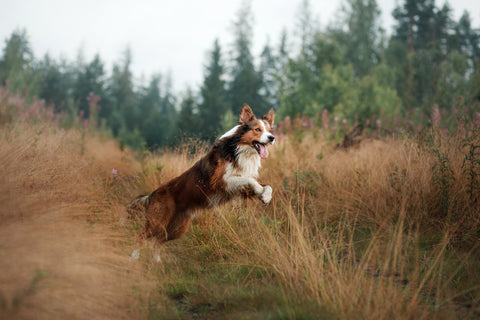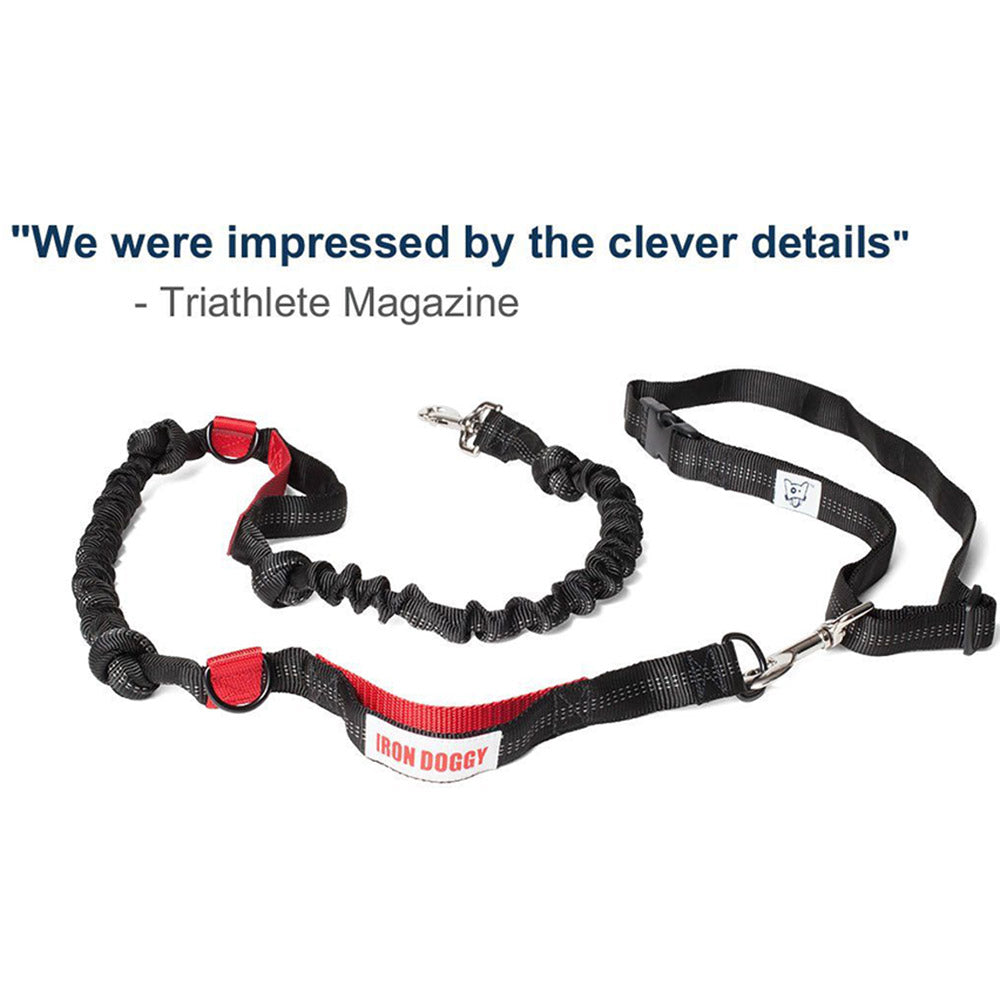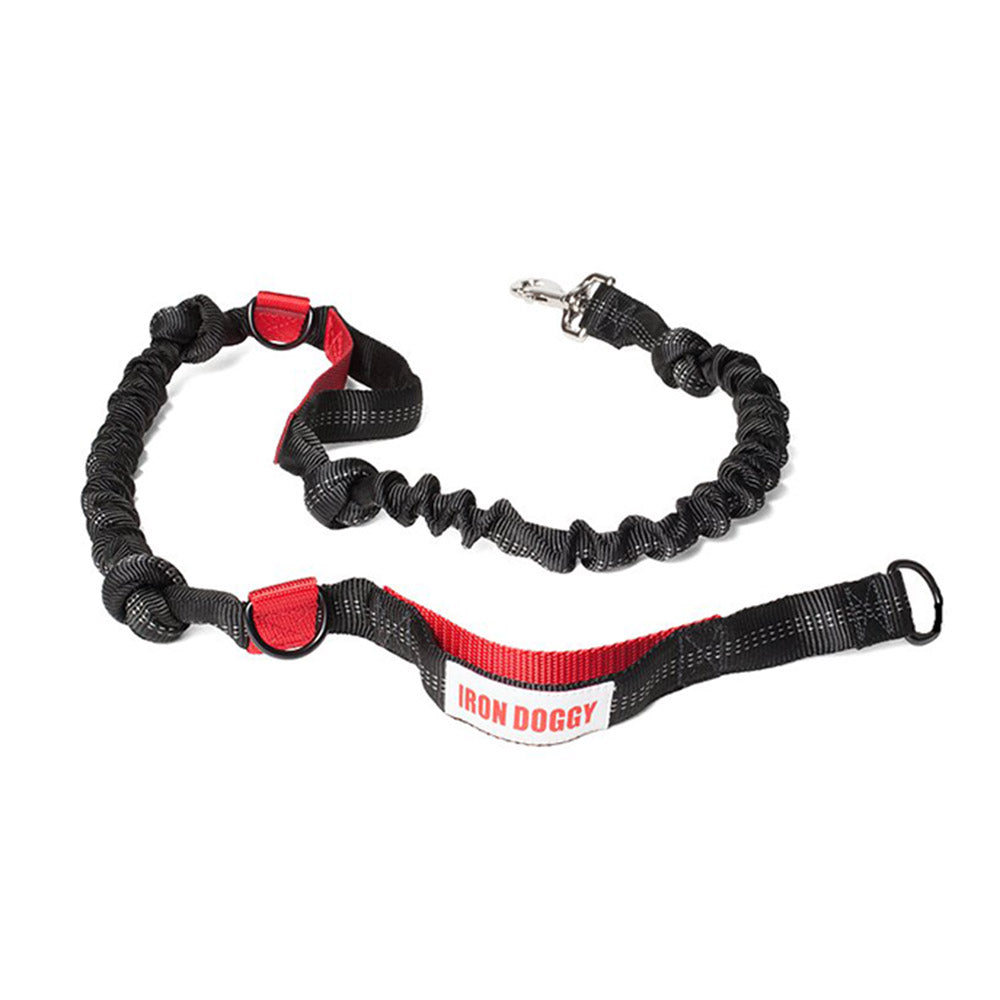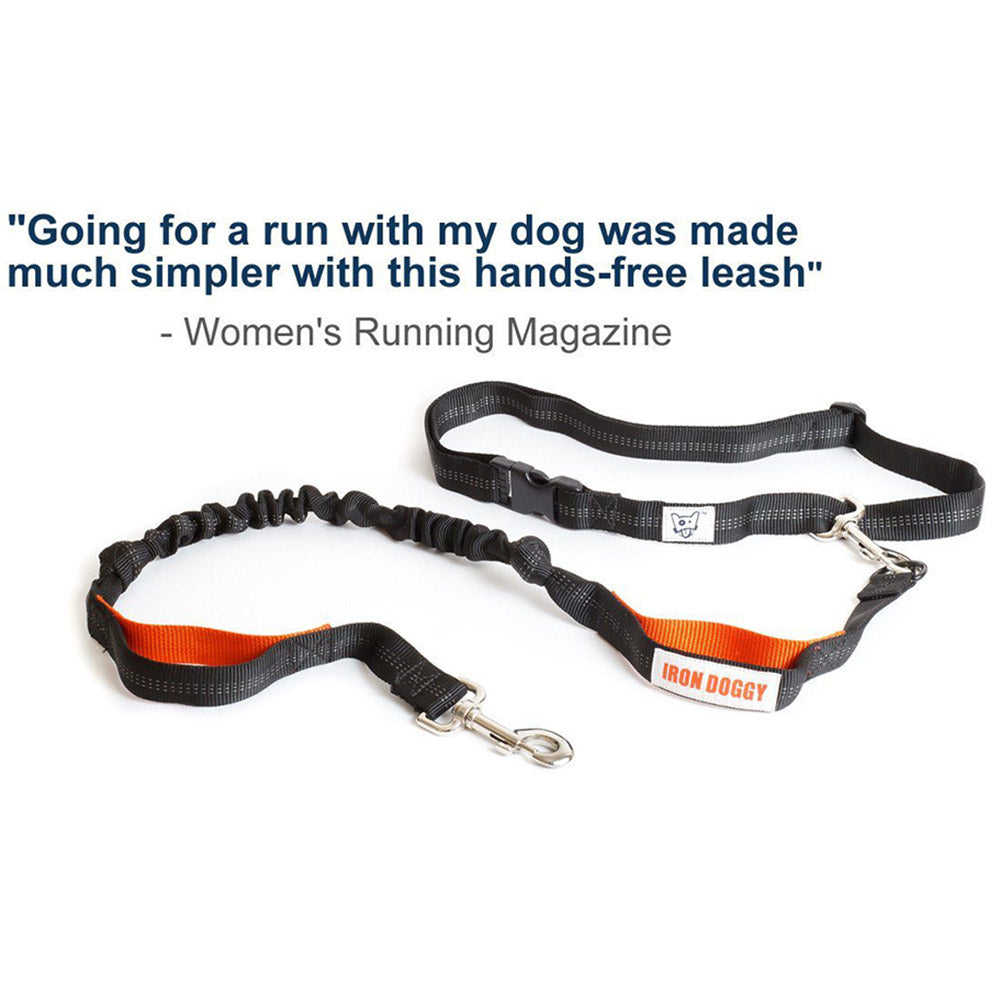
Some dogs pull as if they're part of a sled dog team. Is your pet one of them — to the point that you're scared of walking your boisterous or overly exuberant dog? Proper training will help tame a distractible or high-energy dog's unexpected lunges, but this can take time. So how will you protect yourself from wrenched muscles, sore joints, or other injuries? How can you reduce injuries from a leashed dog?
We've listed some tips, techniques, and equipment (including dog leashes and harnesses) that may help below. First, though, let's look at why you'll want to avoid being jerked around by your dog.
What Causes Injuries From a Leashed Dog?
Falls, smashed fingers, twisted wrists, dislocated elbows, wrenched shoulders... these are just some of the injuries we can get from a leashed dog. According to doctors at Rush University Medical Center, even a small dog making a sudden lunge can create enough torque to break your fingers. Now just imagine the damage a larger, more powerful pet can do! To prevent injuries, the doctors highly recommend against using long leashes, wrapping the leash around your hand, or grabbing your dog by the collar.
According to researchers at Johns Hopkins University, women and anyone age 65 and older present the highest risk of injuring themselves when walking their dogs. Those injuries can range from broken fingers to shoulder sprains or strains to traumatic brain injuries (TBI).
In fact, TBI was the second most common injury amongst adults walking dogs. It and broken hips were the two most common injuries among those 65 and older. Even more reason to protect yourself while walking a rambunctious dog!

Your Dog Can Be Injured, Too
That constant pulling and jerking is dangerous for your dog, especially if she's wearing a collar vs. a harness.
Dog Injuries From Leashes Include:
- Choking or even strangulation from constantly pulling against the leash
- Neck wounds, including bruising or cuts (especially from narrow collars)
- Damage to the thyroid gland in the neck from straining or lunging against the leash
- Nervous system damage from repetitive jerking
- Eye and ear problems caused by too much pressure build-up from constant pulling or jerking
- Tracheal collapse from constant or sudden pulling or lunging
- Spinal injuries caused by lunging against a leash
So you see, good leash manners and the proper equipment are important for your best bud's health and safety!

How to Keep Your Dog From Lunging and Pulling
We all know that proper training is the key to walking a dog without all of the lunging, pulling, jumping, and other four-legged shenanigans. Unfortunately, training takes time, experience, and plenty of patience. So what can you do to protect yourself until your dog is trained?
Kate Anderson, DVM is an assistant clinical professor at Cornell University's Duffield Institute for Animal Behavior. She has several suggestions for avoiding injuries while walking your leashed dog.
- Pay attention to what your dog is doing and what's going on around you. Prepare yourself to respond as needed.
- Don't use a retractable leash. Because these types of leashes always have tension on them, they teach your pup to pull. Yikes!
- Use a no-pull harness with a leash attachment on the front or a head halter (in conjunction with a collar to prevent escapes).
- Take your pup to obedience school. Unless you have considerable experience training dogs, you and your dog will learn faster under the guidance of a professional trainer. Obedience classes are also a great opportunity for socialization — which puppies and even older dogs can benefit from.
- Burn off excess energy before a walk with a rousing game of fetch or a food puzzle toy. Inside doggy games used to keep a dog occupied while you're working from home are also a great way to exercise your pet's body and mind before their walk.
- Avoid high-traffic areas and known triggers when walking your dog before he is fully trained. Common triggers inciting a dog to lunge include other dogs, children playing, bikes, skateboards, and scooters. Learn what triggers your pup so you can avoid them as much as possible.

Having the Right Equipment Will Help Prevent Injuries
As Dr. Anderson suggested, a good no-pull harness deters pulling and lunging because the leash attachment on the front naturally curves the body when a dog tries pulling or lunging. That puts them off-balance enough to stop them. The head halter acts similarly to the halter on a horse. If it can control a horse weighing a half-ton or more, even a 200-pound dog doesn't stand a chance!
The right leash can make all of the difference when it comes to preventing injuries from a leashed dog. A great hands-free leash lets you use your body's core to control your dog rather than just your arms. Properly used, it almost eliminates the possibility of broken fingers, sprained wrists, and torn shoulder muscles when your dog lunges or pulls.
It also cuts down on the chance of you being pulled off balance and falling since it keeps your dog near you rather than at the end of a fully extended arm and leash. The bungee material used in a quality hands-free leash has enough give that it absorbs the shock from any unexpected lunges or sharp pulls. It also has enough breaking strength to stand up to a large, determined dog in hot pursuit of an impudent squirrel.
A leash with easily grabbed "control" handles and hold-knots lets you quickly and safely grab your pet to keep her away from dangers like a potentially aggressive strange dog. It will also keep her from scarfing down that yummy chicken bone someone carelessly left lying around. And you won't get a nasty leash burn in the process!
Keep Your Dog Safe and Comfortable
To learn more about our hands-free leashes, visit the Iron Doggy FAQ page. Then head on over to our Dog Blog for more tips on keeping you and your dog safe and comfortable on walks, hikes, and runs. If you still have questions, don't hesitate to send us a woof. We love to hear from other dog lovers like ourselves!






